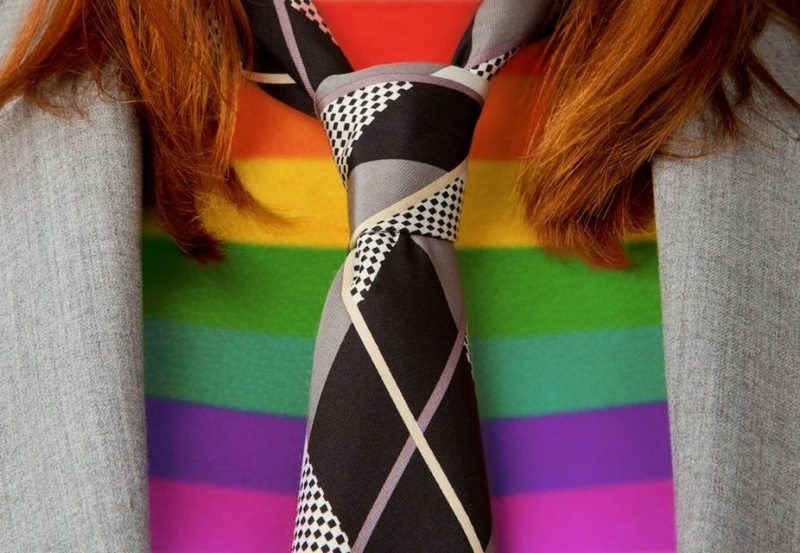In the extensively-studied area of how different demographic groups fare in the labour market, the size of the gender pay gap and its causes has tended to dominate.
Another important characteristic of individuals, and one that is the subject of anti-discrimination laws in many countries, including Australia, is sexual orientation.
In contrast to the mountain of research on gender pay differentials, there have been very few studies that have attempted to estimate the magnitude of differentials between sexual minorities and the heterosexual majority in Australia.
In part, this reflects the absence of adequate data sources that identify sexual minorities. In an attempt to rectify this deficiency, the Household, Income and Labour Dynamics in Australia (HILDA) Survey, Australia’s only large-scale population-representative household panel survey, recently included a question about sexual identity.
Specifically, a question was included in “wave 12” (conducted in 2012) – the self-administered component of the study – that requested respondents to indicate whether they thought of themselves as: “heterosexual or straight”, “gay or lesbian”, “bisexual”, or whether they fell into some other undefined group. In addition, response options of “unsure/don’t know” and “prefer not to say” were also provided. In total, this question was answered by just over 15,000 people. Of these, about 1.4% identified as gay or lesbian, and another 1.4% identified as bisexual.
Armed with these responses, researchers can now begin to correlate sexual identity with other data collected in the HILDA Survey about economic and social outcomes, including, for example, labour market earnings.
This is the subject of recent joint research I conducted with San Diego State University Associate Professor of Economics, Joseph Sabia. Specifically, we looked at the annual earnings outcomes of Australians aged 18 to 64 (but after excluding full-time students) with a view to quantifying systematic differences in the earnings of people with different sexual identities, the sources of any differentials, and whether wage trajectories over the preceding decade followed different paths depending on one’s sexual orientation.
So what did we find?
First, and consistent with US research on this issue, gay men in Australia earn much less than heterosexual men, while lesbian women earn much more than heterosexual women. For gay men, the size of this “penalty” is about 20%, and this does not alter much when we condition on personal and job characteristics. For lesbian women their premium is around 40% but declines to around 33% when we condition on selected characteristics.
Second, the earnings penalty for gay men is due to both a lesser likelihood of employment and a lower hourly wage. The earnings premium for lesbian women, on the other hand, is almost entirely due to the longer hours they work; it is not because lesbian women are paid more per hour.
Third, it is gay men who live with a same-sex partner who suffer the largest wage penalties. Indeed, the annual earnings of a single gay man is not any lower than that of an otherwise comparable single heterosexual man.
Fourth, there is some evidence that the wages penalties faced by gay men are partly explained by differential earnings growth. That is, that wages growth is not as rapid for gay men, suggesting possibly that they face greater barriers to promotion and career advancement than heterosexual men.
When considered in their totality, these findings provide support for the claim that gay men continue to face discrimination in the Australian labour market. In contrast, this does not appear to be true for lesbian women. What explains this very different outcome?
One explanation is simply that attitudes towards gay men, especially by heterosexual men, are less positive than they are towards lesbian women. And of course, men are still much more likely than women to be in positions where they are responsible for decisions about who to hire, fire and promote.
A second possible explanation is that may be easier for lesbian women, on average, to disguise their sexual orientation than it is for gay men.
Finally, it is important to note that while lesbian women may not be discriminated against in the labour market, they may still face discrimination elsewhere in society. Other research, for example, has consistently demonstrated that LGB populations are at much greater risk of depression, anxiety and other mental health disorders, and the magnitude of such associations do not appear to vary much with gender.
The finding this article draws on come from co-authored research with Joseph Sabia (San Diego State University) and published in “Sexual Identity, Earnings, and Labour Market Dynamics: New Evidence from Longitudinal Data in Australia”, Melbourne Institute Working Paper No. 8/15.
It in turn uses unit record data from the Household, Income and Labour Dynamics in Australia (HILDA) Survey, a project initiated and funded by the Australian Government Department of Social Services and managed by the Melbourne Institute.
Mark Wooden, Professorial Fellow, University of Melbourne
This article is republished from The Conversation under a Creative Commons license. Read the original article.
